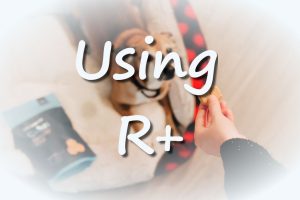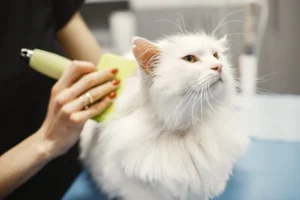Disclosure: We may earn a commission from helpful, relevant links in our content. No cost to you. See our privacy policy.
Dog ear health is a tricky terrain to traverse, isn’t it?
You want nothing but comfort and health for your furry friend, yet you’re left scratching your head, uncertain how to achieve it.
Ear issues in dogs can be more than a nuisance – they can lead to discomfort and health problems if not handled properly. We understand these challenges you face, which is why we’ve designed this guide to simplify the process of dog ear cleaning.
You’ll find practical, easy-to-follow advice to keep your dog’s ears in top shape. Ready to get started? Let’s dive in!

Why Clean Your Dog’s Ears at Home?
Cleaning your dog’s ears at home has multiple benefits.
For one, it’s a preventive measure that keeps ear infections at bay. Canines’ ears, particularly those of breeds with floppy ears, are prone to moisture and dirt build-up.
By regularly checking and cleaning at home, you can avoid the complications that may arise from excessive wax or unnoticed foreign bodies.
Plus, it’s a great bonding activity! Your pooch may find it relaxing (if you’re lucky), and it gives you a chance to notice any changes in their health early on.
What is the Brown Stuff in My Dog’s Ears?
If you’re noticing a brown discharge in your dog’s ears, it’s usually a sign of excess wax or a potential ear infection.
This substance can be a combination of ear wax, oil, and dirt that’s built up over time. In many cases, it’s normal, but if there’s a lot of it, or if your dog seems to be in discomfort, it could indicate an issue.
Ear mites are another common cause of dark, coffee ground-like debris in dogs’ ears. Regular cleaning can help keep this under control, but remember, if you’re unsure, a vet visit is a good idea.
Step-by-Step: How to Clean Your Dog’s Ears at Home
- Preparation. Gather all your materials beforehand to make the process smoother. You’ll need a dog-specific ear cleaning solution, cotton balls or gauze, and treats. Using a product like Zymox Otic Enzymatic Solution or Vet’s Best Ear Relief Wash Cleaner can help to break down wax and debris in a gentle, effective manner.
- Create a Calm Environment. Choose a quiet, comfortable place where your dog feels safe. It can be helpful to do this after a play session when your pet is more relaxed.
- Examine the Ears First. Start by visually inspecting your dog’s ears. They should be clean, odor-free, and pale pink in color. If you notice redness, swelling, or a foul odor, it’s best to consult a vet before proceeding.
- Apply the Cleaning Solution. Gently hold the ear flap upward and fill the ear canal with the cleaning solution. Avoid touching the applicator tip to the ear to prevent contamination.
- Massage the Base of the Ear. Once the solution is in, gently massage the base of the ear for about 20-30 seconds. This will help to loosen any debris inside.
- Let Your Dog Shake It Off. Stand back and allow your dog to shake their head. This helps to bring the loosened debris up out of the ear canal.
- Clean the Outer Ear. Using a cotton ball or piece of gauze, gently wipe the visible part of the inner ear and the opening of the ear canal. Avoid digging too deep as it can cause injury.
- Reward Your Dog. Reward your pet with their favorite treat and praise them for their patience. A high-value treat might be good here. This positive reinforcement will make future cleaning sessions much easier.
Remember to clean one ear completely before moving on to the next to avoid cross-contamination. Also, always consult your vet before starting a new cleaning regimen to ensure it’s suitable for your pet’s specific needs.
Pro tip:
One essential safety tip I’ve learned over years of experience in canine care is to avoid inserting anything into your dog’s ear. It can cause injury and exacerbate the problem rather than solve it. However, if your dog is particularly feisty, you can soak the cotton ball, put it in your dogs ear and try to massage the ear a bit. Video below shows you how to do this.
Suggested reading: Nail Care – Your Dog’s Nail Trimming Guide
Here’s a video from the University Animal Clinic on how to easily clean your dog’s ears:
The Best Home Remedies for Cleaning Your Dog’s Ears
When it comes to your dog’s ear cleaning, a gentle, regular routine is key.
A home blend of white vinegar and warm water (1 part vinegar to 2 parts water) works well for many dogs. This solution helps break down the debris and dry out any excess moisture.
Another useful option is coconut oil – it’s natural, gentle, and has antimicrobial properties. Slightly warm a teaspoon of coconut oil and use a cotton ball to clean the visible parts of your dog’s ears.
These home remedies are easy, cost-effective, and most importantly, safe for your canine’s sensitive ears. In my experience, incorporating such simple, consistent practices in your dog’s grooming routine can make a world of difference to their ear health.

Can I Use Hydrogen Peroxide or Baby Wipes?
While hydrogen peroxide is a popular cleaning agent, it’s a no-go for your dog’s ears. It can cause irritation and dryness, especially with frequent use.
A safer alternative would be a vet-recommended ear cleaning solution like Zymox Otic Enzymatic Solution, which is safe and effective.
As for baby wipes, they might be a convenient option, but they are not designed for the delicate PH balance in your dog’s ears. Instead, you might want to consider specially designed dog ear wipes like PetMD Dog Ear Cleaner Wipes, as these are safer and more effective. These wipes have been formulated to gently clean, deodorize, and dry your pet’s ears.
And remember, if you’re ever uncertain, it’s always best to consult your vet for advice.
When to Consult the Vet: Serious Ear Issues
If you notice persistent shaking of the head, rubbing of ears on the floor, redness, swelling, or a foul odor, these could be signs of an infection or an ear mite infestation. Likewise, if your dog appears in pain when you touch its ears, it’s time to see the vet.
Delaying professional care can exacerbate the issue and lead to more serious complications like hearing loss. My years of experience in animal care have taught me that when in doubt, it’s always best to seek professional help.
Suggested reading: Bathing Your Dog – Easy and Stress-Free Guide
Essential Tips for Regular Ear Cleaning
Here’s a simple truth: Prevention is always better than cure. To that end, here are some valuable tips to remember:
- Make it a routine. Regular checks and cleaning can help prevent most ear issues. Depending on your dog’s breed and lifestyle, this might be weekly or monthly.
- Stay gentle. Never force or rush the process. If your dog is uncomfortable, take a break and try again later.
- Don’t go deep. Clean only what you can see. Inserting anything into the ear canal can cause injury.
- Use the right tools. Use a dog-specific ear cleaner and cotton balls or gauze. Avoid Q-tips as they can push debris further into the ear.
- Treat for a job well done. Reward your dog with a treat after each cleaning session. It’s a simple trick from my practice that turns ear cleaning into a positive experience for your furry friend.
My journey into dog care…
Fast forward to today, armed with years of experience and countless ear cleanings later, I can tell you that it does get easier. The initial discomfort gives way to confidence as you realize that you are capable of caring for your furry friend in the best possible way.
Just remember, with the right knowledge, tools, and a pinch of patience, you’re more than equipped to handle your dog’s ear health. Good luck, fellow pet parents!
FAQs
What Should Healthy Dog Ears Look Like?
Healthy dog ears are clean, odor-free, and pale pink in color. The skin should be smooth, not red or swollen, and without any discharge or debris.
What Do Vets Use to Clean Dog’s Ears?
Vets often use professional-grade cleaners, like those with chlorhexidine or ketoconazole, for breaking down debris and wax. They also employ tools like otoscopes and slender forceps for a safe and deep clean.
How Often Should I Clean My Dog’s Ears?
Cleaning frequency depends on your dog’s breed, age, and lifestyle. On average, a monthly cleaning is sufficient. However, breeds with floppy ears may need more frequent cleaning.
Can I Use Human Ear Cleaning Products on My Dog?
Human ear cleaning products are not suitable for dogs as they may disrupt the delicate pH balance of your dog’s ears. Always opt for dog-specific ear cleaners.
Alex, a passionate animal lover, has experience in training and understanding animal behavior. As a proud pet parent to two dogs and three cats, he founded AnimalReport.net to share insights from animal experts and expand his knowledge of the animal kingdom.




